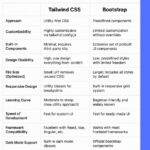As modern web applications become increasingly dynamic, users expect smooth, seamless transitions between pages and states. Traditionally, achieving such transitions required complex JavaScript manipulations, heavy reliance on libraries, or even complete re-renders of the page content. However, with the introduction of the View Transitions API, developers now have a native, browser-supported solution to create elegant visual transitions with minimal effort.
In this article, we will explore what the View Transitions API is, how it works, and why it marks a significant step forward for web developers.
What is the View Transitions API?
The View Transitions API is a new browser feature that enables developers to create animated transitions between different DOM states or even full page navigations without requiring heavy JavaScript frameworks.
Previously, transitions were mainly limited to single-page applications (SPAs) or required complex manual animations. The View Transitions API abstracts much of this complexity, providing a native, declarative way to create smooth animations directly in the browser.
Key Highlights:
- Native: Built directly into modern browsers.
- Lightweight: Reduces dependency on large JavaScript animation libraries.
- Declarative: Simplifies animation logic with minimal code.
- Powerful: Supports both partial DOM updates and full page navigation transitions.
How the View Transitions API Works
At its core, the View Transitions API captures the current state of the page, applies changes to the DOM, and then animates from the old state to the new one. This process is initiated via the startViewTransition() function.
Here’s a basic example:
document.getElementById('button').addEventListener('click', () => {
document.startViewTransition(() => {
document.body.style.backgroundColor = 'skyblue';
});
});
Explanation:
- When the user clicks the button, the
startViewTransitionmethod is called. - The DOM changes (in this case, the background color) are applied inside the callback.
- The browser handles the smooth animation between the original and updated states.
This API empowers developers to focus more on the what and less on the how of animations.
Practical Example: Smooth Page Navigation
Imagine transitioning between two pages on a website with a fluid fade effect:
Page 1 (home.html):
<a href="about.html" viewTransitionName="page">Go to About</a>
Page 2 (about.html):
<a href="home.html" viewTransitionName="page">Back to Home</a>
By assigning the viewTransitionName attribute to related elements, the browser can identify matching elements between the two pages and animate the transition automatically.
Developers can further customize the animation style using CSS:
::view-transition-old(page),
::view-transition-new(page) {
animation: fade 0.5s ease;
}
@keyframes fade {
from { opacity: 0; }
to { opacity: 1; }
}
Benefits of Using the View Transitions API
✅ Enhanced User Experience: Users perceive transitions as smoother and more polished, improving engagement and satisfaction.
✅ Better Performance: Being a native browser feature, transitions are optimized for performance and battery efficiency, especially on mobile devices.
✅ Simplified Codebase: No need to write extensive JavaScript logic or include heavy third-party libraries to achieve basic transitions.
✅ Broader Accessibility: View transitions respect user preferences like reduced motion settings, ensuring accessibility for all users.
Browser Support
As of early 2025, the View Transitions API is supported in the latest versions of major browsers like Google Chrome and Microsoft Edge. Wider adoption is expected across other browsers such as Firefox and Safari in the near future. Developers should always implement graceful fallbacks for unsupported environments.
You can check up-to-date browser compatibility on Can I Use.
Best Practices for Implementing View Transitions
- Minimal DOM Changes: To achieve smoother transitions, limit the number of drastic DOM changes inside the transition callback.
- Use Semantic Attributes: Properly use
viewTransitionNameto map elements across pages. - Accessibility First: Always respect users’ reduced motion preferences to avoid discomfort for motion-sensitive users.
- Optimize Performance: Keep animations lightweight and test them on various devices to ensure consistent performance.
Conclusion
The View Transitions API represents a major advancement in how we approach animations and page transitions on the web. By reducing complexity, enhancing performance, and offering a more native feel, it empowers developers to craft engaging experiences effortlessly.
As browser support continues to grow, embracing the View Transitions API will soon become a standard practice for building modern, dynamic, and user-friendly web applications.
Originally published on Makemychance.com
Original Source View Transitions API
Relavant
What is Animation Easing- Guide
Mastering CSS Transitions in React
This Article by Arsalan Malik is a passionate Software Engineer and the Founder of Makemychance.com. A proud CDAC-qualified developer, Arsalan specializes in full-stack web development, with expertise in technologies like Node.js, PHP, WordPress, React, and modern CSS frameworks.
He actively shares his knowledge and insights with the developer community on platforms like Dev.to and engages with professionals worldwide through LinkedIn.
Arsalan believes in building real-world projects that not only solve problems but also educate and empower users. His mission is to make technology simple, accessible, and impactful for everyone.
Arsalan Malik is a passionate Software Engineer and the Founder of Makemychance.com. A proud CDAC-qualified developer, Arsalan specializes in full-stack web development, with expertise in technologies like Node.js, PHP, WordPress, React, and modern CSS frameworks.
He actively shares his knowledge and insights with the developer community on platforms like Dev.to and engages with professionals worldwide through LinkedIn.
Arsalan believes in building real-world projects that not only solve problems but also educate and empower users. His mission is to make technology simple, accessible, and impactful for everyone.



